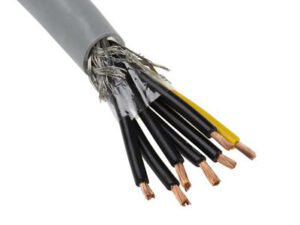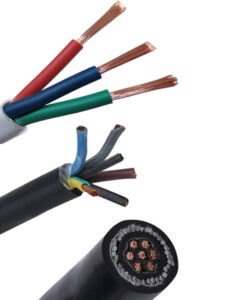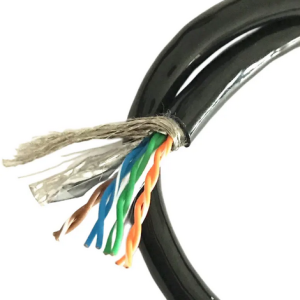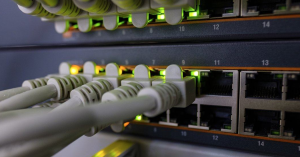In the vast landscape of electrical engineering, instrumentation cables stand as the unsung heroes, enabling the seamless transmission of signals and data critical for various industrial applications. These cables, often overlooked, play a pivotal role in ensuring the reliability and accuracy of measurement and control systems across a plethora of industries. In this comprehensive guide, we delve into the intricate world of instrumentation cables, exploring their diverse models, applications, and the indispensable role they play in modern engineering.

Understanding Instrumentation Cables
Instrumentation cables are specially designed to transmit low-energy electrical signals used for monitoring and controlling electrical power systems and their associated processes. Unlike power cables that carry high-voltage currents, instrumentation cables handle low-voltage signals with utmost precision and reliability. These cables are engineered to withstand electromagnetic interference (EMI) and radio frequency interference (RFI), ensuring the integrity of the transmitted signals even in harsh industrial environments.
Types of Instrumentation Cables
Twisted Pair Cables
Twisted pair cables are the most common type of instrumentation cables, consisting of two insulated conductors twisted together. This configuration helps minimize electromagnetic interference, making them ideal for analog and digital signal transmission in various industrial settings. Twisted pair cables come in various configurations, including shielded and unshielded options, providing flexibility to suit specific application requirements.
Multipair Cables
Multipair cables comprise multiple twisted pairs bundled together within a single sheath. These cables offer the convenience of transmitting multiple signals simultaneously, reducing cable clutter and simplifying installation. Multipair cables are commonly used in complex industrial systems where multiple sensors and control devices need to communicate with a central control unit.

Armored Cables
Armored instrumentation cables feature an additional layer of metal armor, providing enhanced mechanical protection against physical damage, such as crushing, impact, and abrasion. These cables are well-suited for harsh industrial environments where the risk of mechanical stress is high, ensuring long-term reliability and durability.
Fiber Optic Cables
While not as prevalent as copper-based cables, fiber optic instrumentation cables are gaining traction in applications requiring high-speed data transmission over long distances. Fiber optic cables use light signals instead of electrical signals, offering immunity to electromagnetic interference and enabling high bandwidth transmission. They are particularly favored in industries such as telecommunications, oil and gas, and aerospace, where data integrity and speed are paramount.
Applications of Instrumentation Cables
Industrial Automation
Instrumentation cables form the backbone of industrial automation systems, facilitating the transmission of signals between sensors, actuators, and control systems. These cables are integral to processes such as manufacturing, robotics, and logistics, where precise control and monitoring are essential for optimizing productivity and efficiency.
Oil and Gas Industry
In the oil and gas sector, instrumentation cables play a crucial role in upstream, midstream, and downstream operations. From remote sensing and monitoring in drilling rigs and pipelines to control systems in refineries and petrochemical plants, instrumentation cables enable safe and efficient operation in challenging environments characterized by extreme temperatures, corrosive substances, and hazardous atmospheres.
Power Generation and Distribution
Power plants rely on instrumentation cables to monitor and control various parameters, including voltage, current, temperature, and pressure. These cables enable real-time data acquisition and feedback, ensuring the safe and efficient generation, transmission, and distribution of electrical power across the grid.

Transportation and Infrastructure
Instrumentation cables find applications in transportation systems such as railways, airports, and seaports, where they are used for signaling, traffic control, and surveillance. They also play a vital role in critical infrastructure such as bridges, tunnels, and dams, providing monitoring and control capabilities for structural integrity and safety.
Telecommunications
In the realm of telecommunications, instrumentation cables serve as the backbone of network infrastructure, facilitating the transmission of voice, data, and video signals over long distances. Whether in traditional wired networks or modern fiber optic installations, these cables enable seamless connectivity and reliable communication services for businesses and consumers alike.
Selecting the Right Instrumentation Cable
Choosing the appropriate instrumentation cable for a specific application requires careful consideration of various factors, including:
Environmental Conditions
Evaluate the temperature range, moisture levels, chemical exposure, and other environmental factors to select cables with suitable insulation and sheathing materials capable of withstanding the prevailing conditions.
Signal Characteristics
Consider the type of signals being transmitted, such as analog, digital, or high-frequency signals, and choose cables with the appropriate impedance, capacitance, and shielding properties to minimize signal distortion and interference.

Installation Requirements
Determine the installation method, whether fixed or flexible, indoor or outdoor, and select cables with the necessary flexibility, bend radius, and mechanical protection to ensure reliable performance throughout their service life.
Regulatory Compliance
Ensure that the chosen instrumentation cables comply with relevant industry standards and regulations, such as IEC, IEEE, NEC, and UL, to guarantee safety, reliability, and interoperability within the intended application.
Instrumentation cables may not always steal the spotlight, but their significance in modern engineering cannot be overstated. From industrial automation and energy production to telecommunications and transportation, these cables form the lifeline of critical systems and processes, enabling seamless communication, control, and monitoring. By understanding the diverse models, applications, and selection criteria of instrumentation cables, engineers and professionals can harness their full potential to drive innovation, efficiency, and reliability across a wide range of industries.